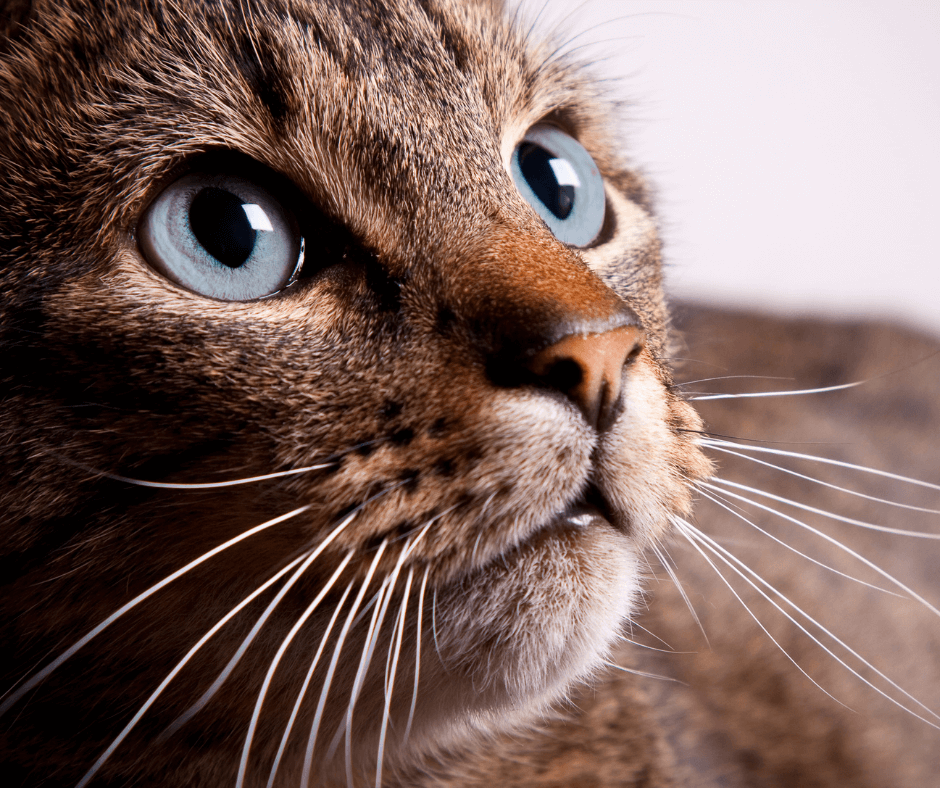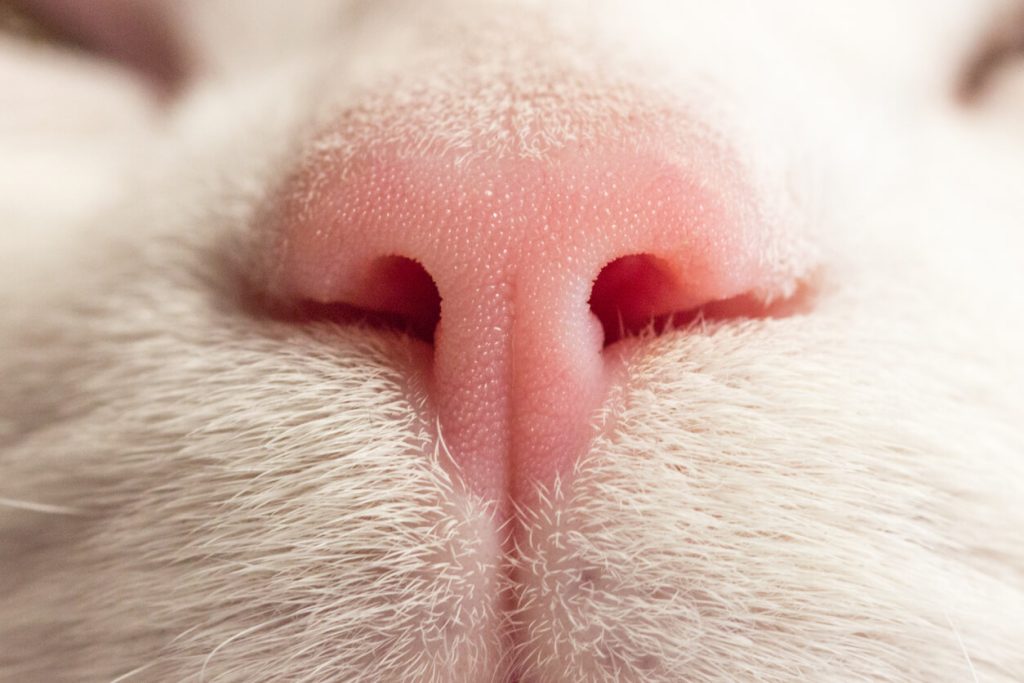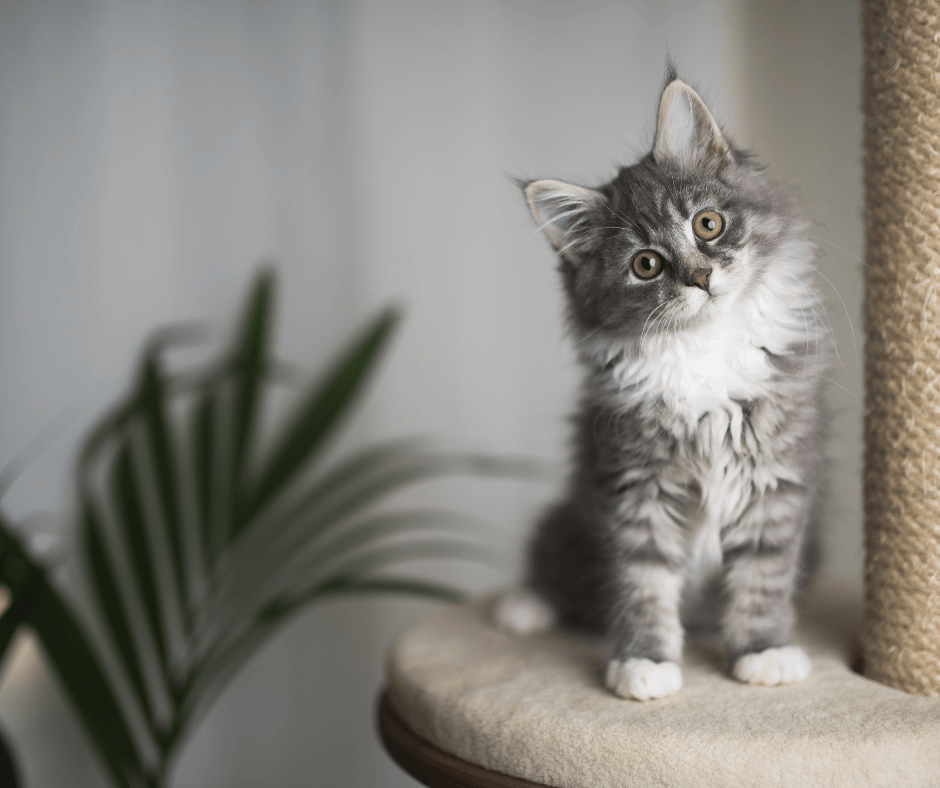How Cats Smell

Cats noses are as complex and amazing as cats themselves. Just like human fingerprints, no two cat nose prints are the same. We take a close look at feline noses and how cats smell.
Importance of Smell
Scent is a big deal for cats. Cats mark their territory using their own scent from glands located in their feet, around their ears and the sides of their bodies.
Cats love things they can smear their scent into. This is why a cat will rub against their guardians, furniture and other pets. They are essentially saying, ‘This is mine, and this is mine, and this also is mine…’
A cat’s landlord nature is why they need their own zone and their own litter box in the home. Read our post 9 Ways to Make Your Cat Happy for more.
Jacobson’s Organ
Like most mammals cats possess a vomeronasal organ, or the Jacobson’s organ, located in the roof of the mouth. This organ forms part of a cat’s olfactory system, widening their scope for picking up scent through their mouths. This is why they sometimes open their mouth as they smell.

Cats vs Dogs
A cat’s sense of smell is superior to ours, but not as powerful as that of a dog. Carly Patterson, Clinical Assistant Professor at Texas A&M University, says cats have less scent receptors than dogs. But recent research shows that cats are better able to discern between different scents.
Something cats and dogs have in common is the individuality of their nose prints. China, with the world’s largest population, utilises pet nose prints to establish identification for pet insurance. The Canadian Agricultural Department has recognised the uniqueness of dog nose prints since 1938. In the US, apps like NOSEiD promise to reunite you with your lost dog.
Recent research from Korea supports the ingenious new app, Petnow, for cat and dog owners. The biometric ID app, which won the CES Innovation Award in 2022, is making its way around the world and we’re hoping we don’t have to wait long before it launches in Australia.
Preferred Aromas
Catmint and silver vine are generally a cat’s preferred aromas. Read more about catmint and silver vine in our post, All You Need to Know About Cat Grass and Catmint. Essential oils are extracted, concentrated and purified. According to Katelyn Son, a holistic pet wellness expert with Veterinarian.org, research on essential oils for pets needs development, but general findings will give you an idea of where to begin looking for a pleasing scent for your feline friend.
Using a diffuser will help prevent an adverse reaction. Cats lack the liver enzyme, glucuronyl transferase, which means they can not metabolise certain components of essential oils, leaving them vulnerable to toxicity. According to Australian made and owned company, In Essence, it is important to not apply essential oils to a cat’s fur or skin, or expose them to ingestion. It warns that essential oils that please your dog will not necessarily elicit the same response from your cat. In Essence also suggests the use of diffusers, located where your cat cannot access, as the safest way to go.
The best essential oils to try are lavender and chamomile. Other oils that some cats like include frankincense, cedar, sweet pea and valerian.
A cat’s nose knows what it likes. Remembering the importance of scent to your cat will help you provide them with a happier and less stressful life. Your feline companion will love you for it.

